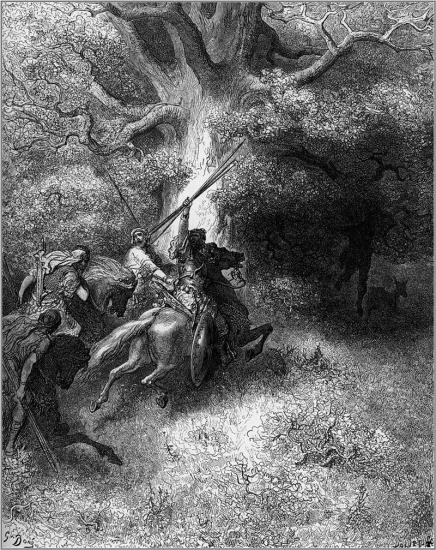To the ancient Canaanites, the terebinth was sacred. And then there's that symbiosis the tree has with a bug.
Miriam Feinberg Vamosh
Source - http://www.haaretz.com/archaeology/.premium-1.629771
The Atlantic pistachio tree is not only a source of food and a lesson in mutuality, thanks to a very strange symbiotic relationship it has with an insect. It was also a goddess, at least once upon a time.
In Israel, fall doesn’t trumpet its arrival in a cacophonous changing of leaves. A rare one whose leaves do turn russet in the best tradition of more northern climes is the wild terebinth, a.k.a. the Atlantic pistachio – oft-mentioned in the bible and a source of superfood for the locals before they were even human.
Some terebinths are low and bushy, like in the Valley of Elah, where Davidfought Goliath (1 Sam. 17:2 - elah is the name of this tree in Hebrew). Yet others have broad girths and wide crowns, in the rare places where deforestation over the centuries was avoided.
The Pistacia atlantica nuts among the “choice fruits” of Canaan that Jacob instructed his sons to take back to Egypt (Gen. 43:11) were pistachios (although the Hebrew word used in that verse, botnim, is today translated as “peanuts” ). Today we know that Jacob did the Egyptians a favor – the true pistachio, a relative of the Atlantic pistachio, is now widely touted as a superfood.
Then there’s the grisly tale of the death of Absalom, son of King David. The Bible says it was from the boughs of a “great terebinth” (some versions say oak) that Absalom found himself caught by his famously heavy tresses, when his father’s general, Joab, found him and ran him through (2 Sam. 18: 9–15).

The Death of Absalom, painted by Gustav Dore (1832-1883). Photo: Wikimedia Commons
Atlantic pistachio seeds were unearthed in an excavation stratum going back some 9,000 years in Jarmo, in northeastern Iraq, near the oil-rich, dispute-steeped region of Kirkuk. These seeds were also among seven types of edible nuts found – along with stone tools to crack them open – at Gesher Bnot Ya’akov near the banks of the northern Jordan River, where our prehistoric ancestors ate them some 780,000 years ago.
Over the ages, the Atlantic pistachio has found many uses. The fruit produced oil used for lighting and medicine and the wood was carved into olive presses and other agricultural devices. The tree can also be used as rootstock on which true pistachios (Pistacia vera) – a relative of the Atlantic pistachio – are produced.
The God factor
God is in the terebinth tree – literally. The Hebrew name of the tree, elah, is derived from the word El – God. Elah, the feminine form of that word, means goddess.
The tree's ancient name is yet more evidence of pagan devotion to trees, going as far back at least to Caananite times, and of the pistachio's association with goddess worship that the Bible mentions frequently (for example, Jeremiah 17:1-2): "The sin of Judah is written with a pen of iron, and with the point of a diamond: it is graven upon the table of their heart, and upon the horns of your altars; Whilst their children remember their altars and their groves by the green trees upon the high hills."
Old, large terebinths apparently survived the deforestation of the Holy Land, from Roman to Ottoman times because people believed them sacred and brought them their prayers and petitions. In fact, some people still do, as seen by colorful pieces of cloth or even plastic bags tied to such trees to this day.

A tree (an officinal styrax) bearing devotional ornamentation.Photo: Yaacov Shkolnik
Symbiosis with a bug
Not only is the pistachio considered sacred by some: it has a unique symbiotic relationship with a certain kind of aphid.
In the spring the tree sprouts fist-sized growths, called galls. But they're not some seasonal tree tumor. The galls are formed by aphids.
These little creatures, Slavum wertheimae, create an incubator out of the leaves apparently only of this particular tree. Their young are nourished by the nutrients in the leaves and eventually emerge fat and happy from an opening in the gall.

The Atlantic pistachio with galls. Photo: Miriam Feinberg Vamosh
Galls – baaaaaad. At least that’s what the goats apparently tell each other when they come to feed on Atlantic pistachio trees and catch of whiff of the reek these galls emit. In fact, chemical analysis showed that they emit quantities of stinky organic compounds called terpenes.
Scientists observing foraging goats report that the animals turned up their noses at the Atlantic pistachio and went on to seek something less odiferous for lunch. Thus the lowly aphids protect the tree from overgrazing. Research has also shown that the galls even release antibacterial and antifungal agents that also protect the tree.
Thus, what seems to be puncturing and deforming the leaves of the terebinth – the aphids in their little gall cradles – actually defend the trees and help them thrive from season to season, century to century - if no one cuts them down.